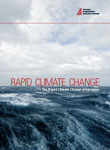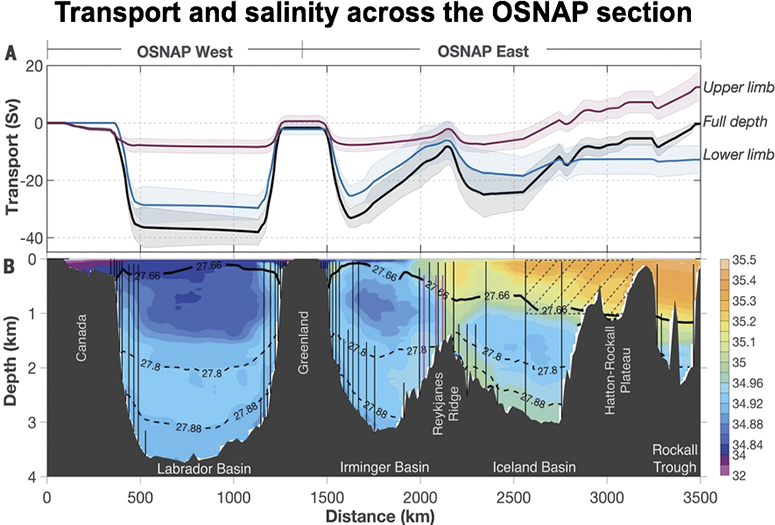
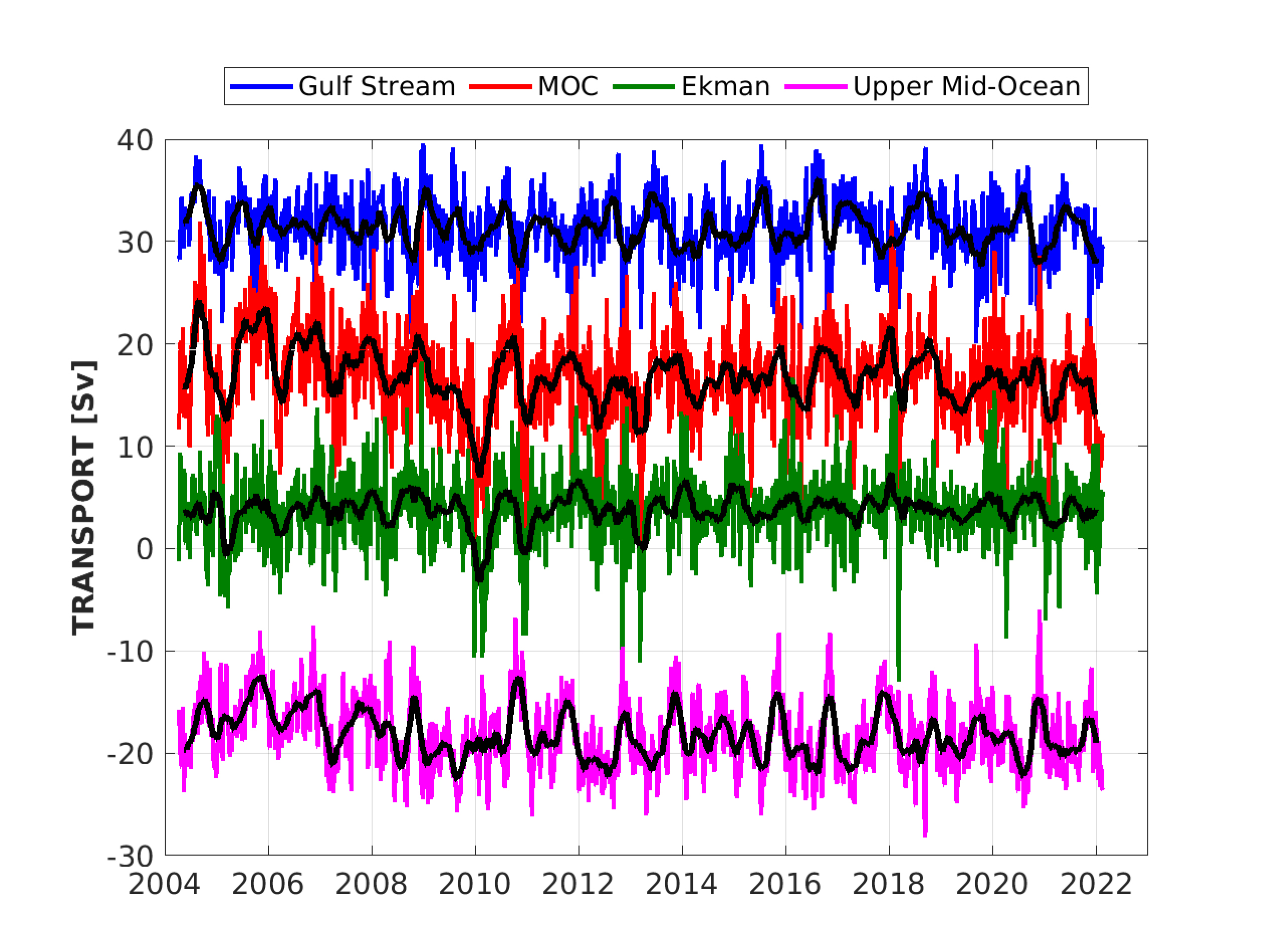
Observing the AMOC at 26°N
Observing changes in the AMOC is important for understanding decadal climate variability and change. The RAPID array across the Atlantic at 26°N has now observed the AMOC continuously since 2004 and revealed greater variability than expected.
Low AMOC events in 2009-10 and 2010-11 coincided with cold winters in Europe and suggest a previously unsuspected role for the AMOC in climate variability. The data to September 2018 show a possible recovery of the AMOC strength since the 2009 low, but the time series is too short to draw strong conclusions about the reasons for this. Paper in Ocean Science
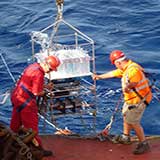
26N team wins The Oceanography Society inaugural award
The 26N project has been selected for The Oceanography Society (TOS) inaugural award for Innovation and Excellence in sustained ocean observing for scientific and practical applications. More information about the award on the TOS website
Project website Data download Science background
Overturning in the Sub-polar North Atlantic
OSNAP is a 10-year international program to observe the AMOC in subpolar North Atlantic. The OSNAP observing system has two legs: one from southern Labrador to the tip of Greenland across the mouth of the Labrador Sea (OSNAP West), and the second from the tip of Greenland to Scotland (OSNAP East).
OSNAP complements RAPID to give a more complete picture of Atlantic overturning.
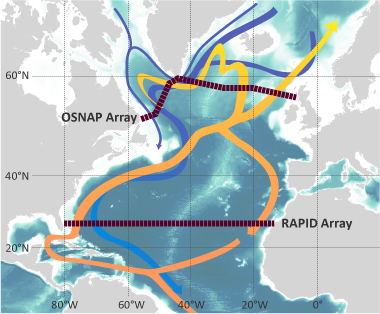
OSNAP also uses subsurface floats to trace the pathways of overflow waters from the Nordic seas, and study currents crossing the OSNAP line.
AGU Journals Special Issue
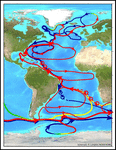
The Atlantic Meridional Overturning Circulation:
Reviews of Observational and Modeling Advances: Reviews of Geophysics.
Overview and Content
New papers will appear as they become ready for publication.
Current RAPID research projects
The RAPID AMOC programme is funding three research projects to address novel uses of data from the 26°N RAPID array:
- Novel approaches to ocean state estimation using 26.5°N data
- The role of the AMOC in climate variability and predictability
- Atlantic BiogeoChemical Fluxes
Three current projects started in October 2014 and are addressing these objectives. MORE
New Events
US AMOC - UK RAPID Monthly AMOC Webinar Series
From 21 May 2020. Focus on papers from the AGU special issue.
Details of talks and how to join
Atlantic overturning: new observations and challenges
8-9 March 2020. Royal Society scientific discussion meeting.
Meeting page on the Royal Society website
Past RAPID research programmes
RAPID AMOC builds on two earlier programmes:
RAPID (2001-2007) included palaeo-oceanography.
RAPID-WATCH (2008-2014) continued the RAPID arrays and model studies.

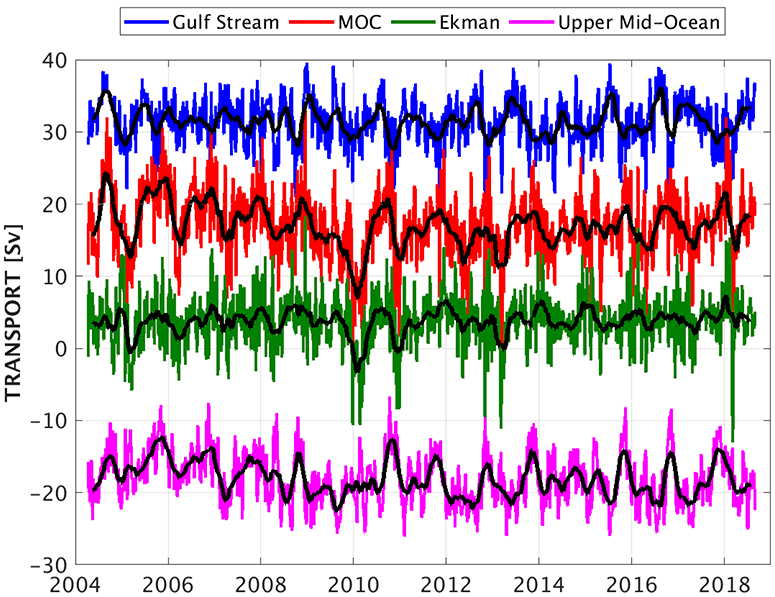
Ten-day (colours) and three month low-pass (black) timeseries of Florida Straits transport (blue), Ekman transport (black), upper mid-ocean transport (magenta), and overturning transport (red) for the period 2nd April 2004 to February 2017. Florida Straits transport is based on electromagnetic cable measurements; Ekman transport is based on ERA winds. The upper mid-ocean transport, based on the RAPID time series, is the vertical integral of the transport per unit depth down to the deepest northward velocity (~1100 m) on each day. Overturning transport is then the sum of the Florida Straits, Ekman, and upper mid-ocean transports and represents the maximum northward transport of upper-layer waters on each day. Positive transports correspond to northward flow.


